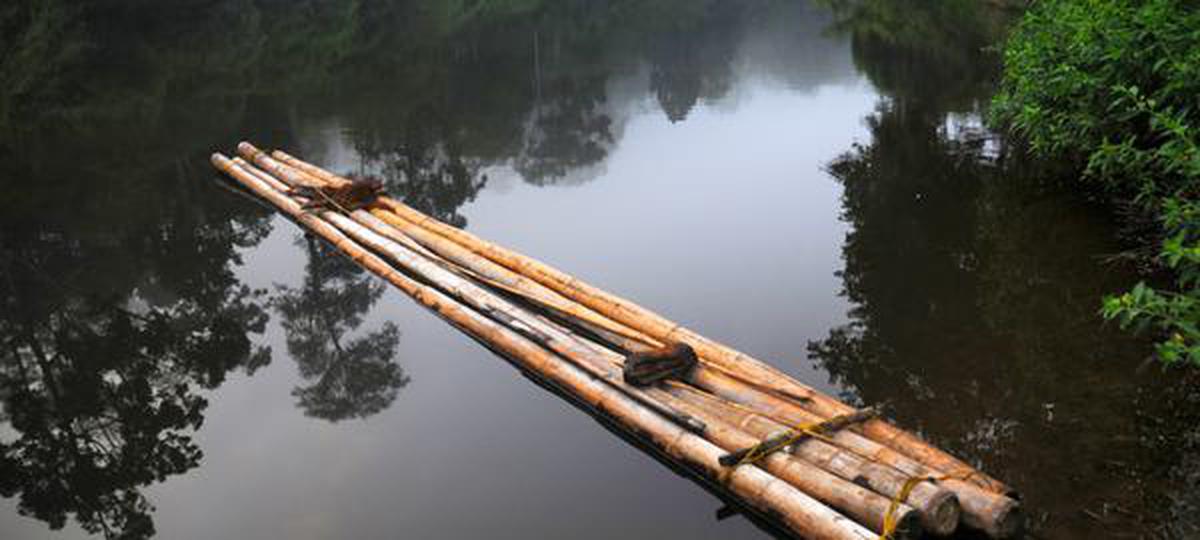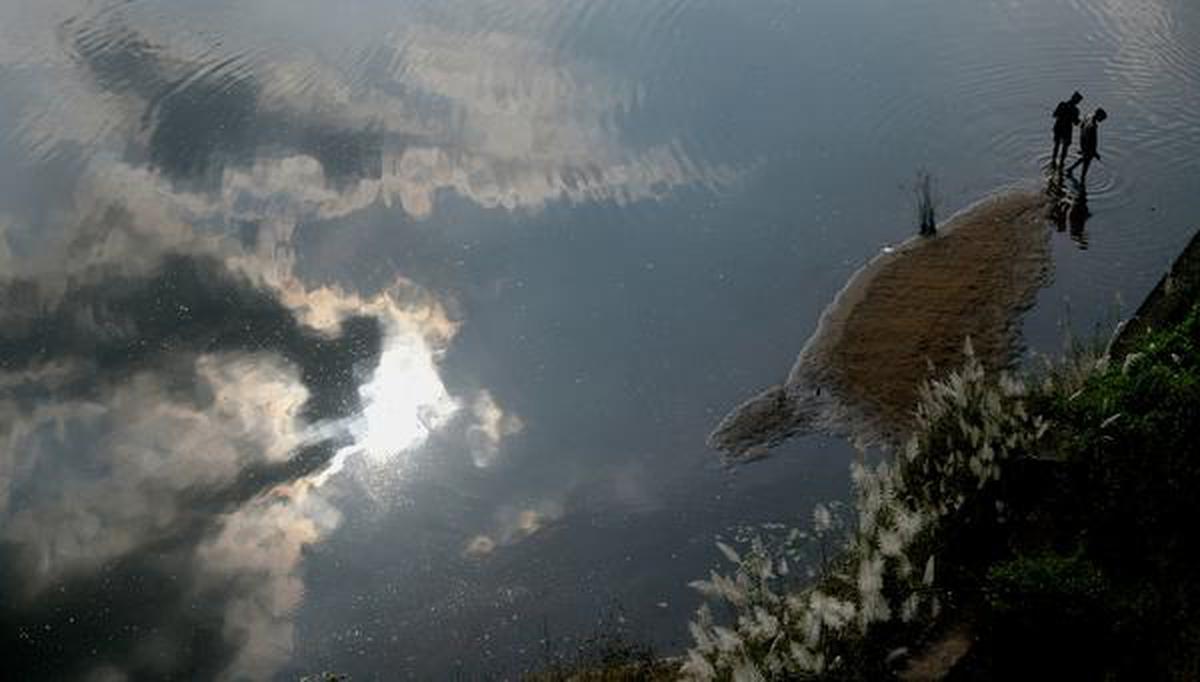[ad_1]

The Eloor-Edayar industrial area on the banks of the Periyar
| Photo Credit: THULASI KAKKAT
The Periyar’s plight
The pollution of Periyar is a continuing story, says Purushan Eloor, who has been working for the protection of the river relentlessly for 34 years. At the forefront of the Periyar Malineekarana Virudha Samithi, a forum formed by local residents and environmental activists to fight pollution caused by industrial units in the Eloor-Edayar industrial belt, he has seen the river’s constant struggle for survival. As the research coordinator of the Samithi, he says despite the National Green Tribunal’s directive to clean up the Periyar and implement monitoring systems to check air and water pollution, in 2022, the situation of the river continues to be deplorable.
It is still battling the effects of effluents discharged into it by the industrial units built along its bank. “The Eloor-Edayar belt, the most polluted stretch, alone has over 285 industrial companies and over a 100 of them are in the red category,” says Purushan. Red category industries are those that deal with hazardous waste. “The effluents are raw, treated, or partially treated. Most of these industries do not have properly functioning wastewater treatment plants. Over 48 of them discharge effluents straight into the Periyar,” he adds.
2024 alone has seen eight fish kills in Periyar. The river turned black over 15 times, too, he adds. Despite sounding the warning bells and consistent efforts to raise awareness, the condition of the river continues to worsen. The Samithi, however, continues to monitor the river and create awareness among the public regarding its condition. “We have been asking for a dyke to be built on the riverside to check effluent discharge. A path created on the bank of the river will also help to some extent as the public can observe/monitor any changes in the river,” he adds.

The Chalakkudy river
Chalakkudy river’s summer of discontent
Thirty-seven years ago, a group of environmentally-conscious individuals formed a collective to protect the Chalakkudy river, addressing the issues that were plaguing the river such as destruction of the catchment areas, sand mining, and proposals for construction of dams. The Chalakkudy Puzha Samrakshana Samithi carried out extensive studies of the river basin, made the public aware and carried out campaigns against projects that would lead to the deterioration of the river.
In 2024, the situation is not very different. Multiple issues continue to plague the Chalakkudy river, which flows through Thrissur, Palakkad and Ernakulam districts. The fifth longest in the State, the river’s natural summer flow has reduced considerably, says S P Ravi, president of the All Kerala River Protection Council and one of the earliest members of the Chalakkudy Puzha Samrakshana Samithi. “The natural summer flow has reduced drastically because the evergreen forests of the upstream catchment areas are no longer intact,” he says.
Due to the reduced summer flow, the natural cleansing capacity of the river is impacted too. The present river flow in summer is entirely dependent on the storage at the Sholayar dam, which is only 50% of the desired quantity. “We are looking at a drought-like situation,” he adds. A river action plan if being planned, roping in various stakeholders to rejuvenate the river. “The plan is to look at the river in a comprehensive way, and explore ways to restore the upper catchment areas, undertake pollution control measures, put in place water resource management plans, to mention a few,” he adds

Bharathapuzha
Friends of Bharathapuzha
Five years ago, a collective effort for the rejuvenation of the Bharathapuzha was set in motion by former managing director of Delhi Metro Rail Corporation and technocrat E Sreedharan. The idea was to work out technical solutions to address the problems facing the river, which has been dealing with extensive sand mining and pollution.
Vinod Nambiar, secretary of Friends of Bharathapuzha, says the river has lost its natural flow owing to destruction of catchment areas. The fields have been filled up. “The smaller streams that fed the river have all dried up and the entire eco-system of the river has changed,” he says. Domestic and industrial waste from Shornur, Pattambi, Palakkad and Ottapalam regions are directly discharged into the river. The Bharathapuzha is the source of drinking water to Palakkad, Malappuram and Thrissur districts.
Friends of Bharathapuzha aims at developing a comprehensive action plan to involve Panchayats and local level bodies in conservation efforts; a water conclave is on the cards, involving various stakeholders to discuss the crisis and possible solutions, says Vinod. “We aim to have at least 17 local chapters of Friends of Bharathapuzha by 2030, to strengthen the campaign for the ways to protect the river.”
[ad_2]





